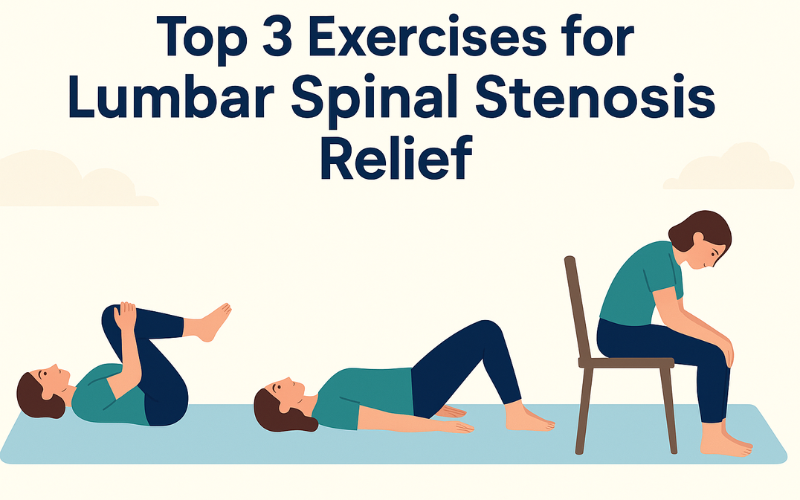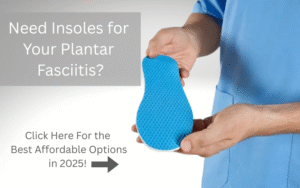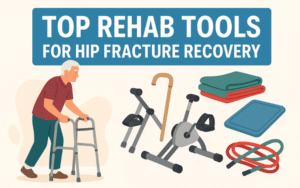If you’re searching for effective exercises for lumbar spinal stenosis, you’re in the right place. This condition can cause pain, numbness, or tightness in your lower back and legs, making daily movement difficult. But there’s hope—gentle, targeted exercises can help relieve pressure and improve how you feel.
In this post, we’ll show you the top 3 physical therapist-recommended exercises to ease lumbar spinal stenosis symptoms. They’re easy to follow, safe to do at home, and made to help you move with less pain. Let’s get started!
Table of Contents
🚨 Looking for more information about Lumbar Spinal Stenosis? Check out our Spinal Stenosis: Causes, Symptoms, and Best Treatment Options or other related posts throughout this site.
🏁 What Is Lumbar Spinal Stenosis and Why Exercise Helps
Lumbar spinal stenosis happens when the space inside the lower part of your spine becomes too narrow. This puts pressure on the spinal cord and nerves, often causing pain, numbness, or weakness in your lower back, buttocks, or legs. It can make walking, standing, or even simple daily tasks more difficult.
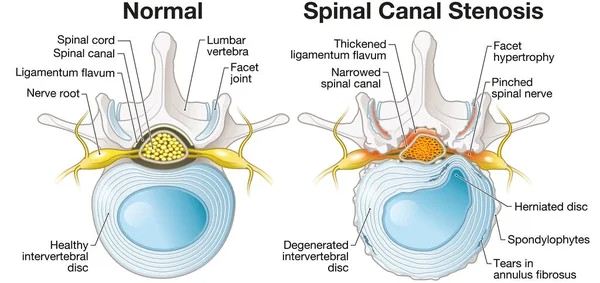
Common Symptoms Include:
- Pain or cramping in your legs when walking
- Numbness or tingling in the legs or feet
- Lower back stiffness or aching
- Trouble standing for long periods
Many people think surgery is the only solution—but that’s not always true.
Targeted exercises for lumbar spinal stenosis can make a big difference. Here’s how:
- ✔️ They help open space in the spine, reducing nerve pressure
- ✔️ They stretch and strengthen key muscles that support your back
- ✔️ They improve posture, which can relieve pain and tension
- ✔️ They boost flexibility and movement, helping you stay active
Even doing just a few minutes of the right exercises each day can lead to noticeable relief over time.
🏋️ Top 3 Exercises for Lumbar Spinal Stenosis Relief
These physical therapist-recommended exercises for lumbar spinal stenosis are designed to gently reduce pressure on your spine and improve mobility. They’re safe, simple, and can be done at home—no equipment needed.
💡 Tip: Start slowly. Aim for 1–2 sets of each exercise and increase gradually as your body adjusts.
1. Knee-to-Chest Stretch
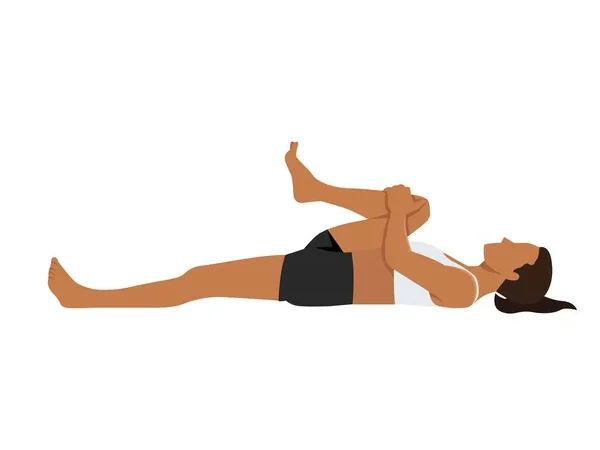
This stretch helps open space in the lower spine and relieves pressure on the nerves.
How to do it:
- Lie on your back with knees bent and feet flat on the floor.
- Bring one knee toward your chest and hold it with both hands.
- Hold for 20–30 seconds, then switch legs.
- Repeat 2–3 times per side.
Benefits:
✔️ Reduces nerve compression
✔️ Relieves lower back tension
✔️ Improves flexibility
2. Pelvic Tilts
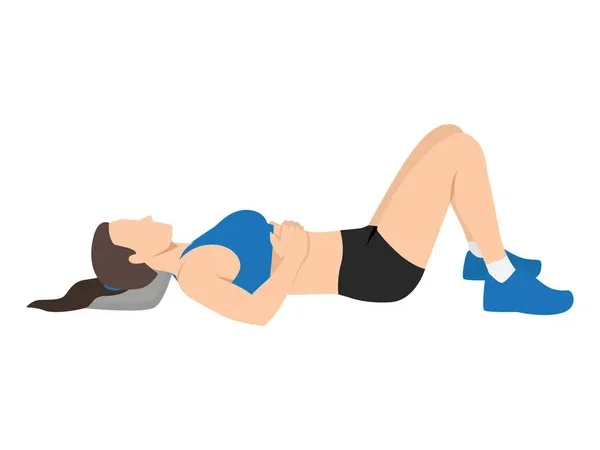
Pelvic tilts strengthen your core and support better posture, which can reduce spinal stress.
How to do it:
- Lie on your back with knees bent and feet flat.
- Tighten your stomach muscles and press your lower back gently into the floor.
- Hold for 5 seconds, then relax.
- Repeat 10–15 times.
Benefits:
✔️ Strengthens deep abdominal muscles
✔️ Promotes spine stability
✔️ Reduces back strain
3. Seated Forward Bend
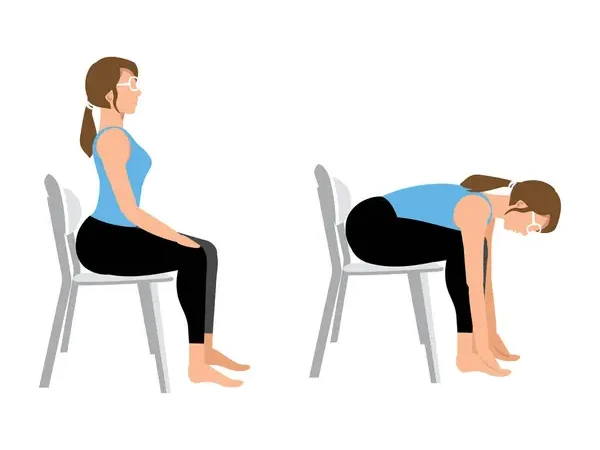
This gentle stretch reduces stiffness in the lower back and legs—common in stenosis.
How to do it:
- Sit on a chair with your feet flat and knees at 90 degrees.
- Slowly bend forward, reaching your hands toward the floor.
- Relax your head and neck, hold for 15–20 seconds.
- Return to sitting and repeat 2–3 times.
Benefits:
✔️ Eases tension in the spine
✔️ Improves circulation
✔️ Promotes better movement
🕗 How Often Should You Do These Exercises?
Consistency is key when it comes to exercises for lumbar spinal stenosis. These movements are gentle enough to do daily, and they work best when made part of your routine.
🗓️ Recommended Schedule:
- Start with 3–4 days per week
- Do 1–2 sets of each exercise
- Hold each stretch for 20–30 seconds
- Slowly increase to daily sessions as your body gets used to the movements
🚨Listen to your body. If an exercise causes sharp pain, stop and rest. Some mild soreness is normal, especially in the beginning, but pain that gets worse may be a sign you need to adjust or talk to a physical therapist.
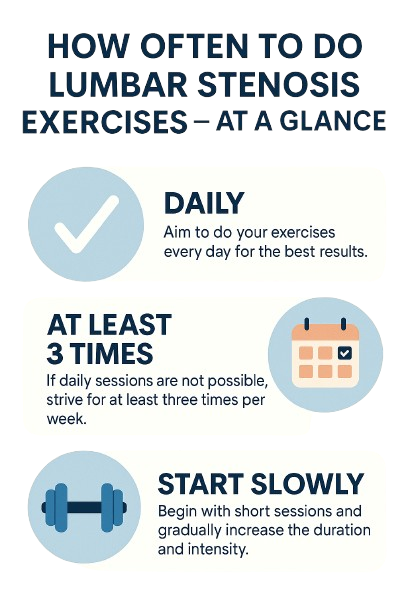
🔁 Tips for Long-Term Success:
- Combine with walking, water exercise, or gentle yoga if approved by your doctor
- Set a reminder or add it to your morning routine
- Do the exercises on a yoga mat, firm bed, or carpeted surface
- Track your progress in a notebook or app
🛑 Exercises to Avoid with Lumbar Spinal Stenosis
Not all movements are safe for people with lumbar spinal stenosis. Some exercises can actually make your symptoms worse by increasing pressure on the spine or forcing it into unsafe positions.
If you have this condition, it’s important to avoid exercises that involve spinal extension (arching backward), high impact, or deep twisting.
🚫 Avoid These Common Movements:
- Back Extensions (lying face down and lifting the chest off the floor)
- High-Impact Activities like running, jumping, or heavy lifting
- Toe-Touches While Standing (can strain the lower spine)
- Backbends in Yoga (e.g., cobra pose or upward dog)
- Sit-Ups and Crunches (can compress the spine and aggravate nerves)
🚨These movements may worsen nerve compression and lead to increased pain, numbness, or leg weakness.
✅ What to Do Instead:
Focus on gentle, forward-bending stretches and core-stabilizing movements—like the ones listed in this guide. These help open space in the spinal canal and support your back safely.
💡 Pro Tip: Always check with a physical therapist or doctor before starting any new exercise, especially if your symptoms are severe.
🏆 Bonus Tips for Managing Lumbar Spinal Stenosis Without Surgery
While exercises for lumbar spinal stenosis are a key part of relief, they work even better when combined with healthy daily habits. Making small changes to how you move, sit, and rest can lower pain levels and improve how your back feels day to day.
🧠 1. Practice Good Posture
Slouching or leaning backward can increase pressure on the spine.
- Sit with your back supported and feet flat on the floor
- Use a lumbar roll or cushion for support
- Avoid standing or sitting in one position for too long
♨️❄️ 2. Use Ice or Heat Therapy
- Ice helps reduce swelling and pain after activity
- Heat relaxes muscles and improves blood flow before exercise
Use for 15–20 minutes at a time as needed.
🛌 3. Sleep Smart
- Use a medium-firm mattress
- Sleep on your side with a pillow between your knees
- Avoid sleeping on your stomach—it can stress your back
🚶 4. Stay Active
Low-impact activities like walking, water aerobics, or stationary biking keep your spine flexible and improve circulation. Just avoid movements that cause pain.
👨⚕️ 5. Work With a Physical Therapist
If symptoms continue or worsen, a physical therapist can create a custom plan for your condition. They’ll monitor your progress and make adjustments as needed.
🔧 Helpful Tools for Lumbar Spinal Stenosis Relief
| Product | Description | Buy Now |
|---|---|---|
| Lumbar Roll Support Pillow | Supports proper spine alignment when sitting. Ideal for office chairs, car seats, and couches. | 👉 View on Amazon |
| Hot & Cold Therapy Pack | Flexible gel pack for back pain relief. Use heat to relax muscles or ice to reduce swelling. | 👉 View on Amazon |
| Medium-Firm Mattress (Orthopedic) | Promotes better sleep posture and reduces pressure on the spine. Great for back pain relief. | 👉 View on Amazon |
📢Ready to try the best tools for lumbar spinal stenosis recovery? Explore our recommended products and build your home spinal stenosis kit today!


